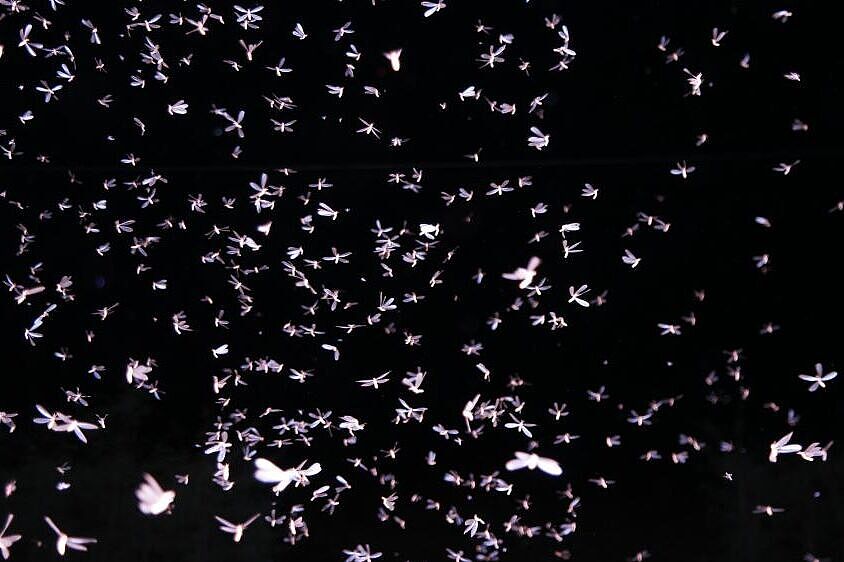Fortunately, they are not bothered by low levels of light pollution.
In the context of the general decline in insects, moths have also become fewer. They are important nocturnal pollinators. One possible reason for the loss of insects is light pollution, which mainly affects nocturnal species that orient themselves to the stars and can be distracted by artificial light sources.
"Nocturnal insects have evolved in natural, nocturnal light conditions and can therefore use low levels of light, including starlight, for orientation. Dung beetles, for example, can use the Milky Way for orientation and also perceive polarisation patterns of moonlight," explained IGB researcher Dr Franz Hölker.
Therefore, the research team studied the reproductive behaviour of male moths of the species privet hawkmoth (Sphinx ligustri) under different light conditions in a comparatively dark night landscape largely untouched by light pollution. They combined behavioural experiments with detailed light measurements from a so-called all-sky camera. „This makes it possible to map the nocturnal light environment and to distinguish, for example, natural light sources from "skyglow" - a type of indirect light pollution,“ said physicist and co-author Dr. Andreas Jechow. The team was thus able to show for the first time that male moths can use the moon for orientation to find females.
The moon as a compass
In the behavioural experiments, the released male moths found the females in the cages with a higher probability and significantly faster when the moon was low above the horizon. It did not matter whether the moon was obscured by clouds. The phase of the moon was also not an influencing factor. However, the position of the moon did play a role in the direction of flight: the more southerly the position of the moon, the more likely the males were to fly to the south-facing cages with the females - in other words, they use it as a sort of compass.
Male moths are not disturbed by low light pollution
Distant artificial light sources - such as a light dome on the horizon - did not attract males. "As soon as the moon appears above the horizon and stands out against the general illumination from light pollution near the horizon, the male moths fly there rather than away from it," said the principal investigator of the study Dr. Jaqueline Degen from the University of Würzburg. "We still need to find out how this looks at higher light pollution levels from one or more bright light sources. But this is actually good news for now."


